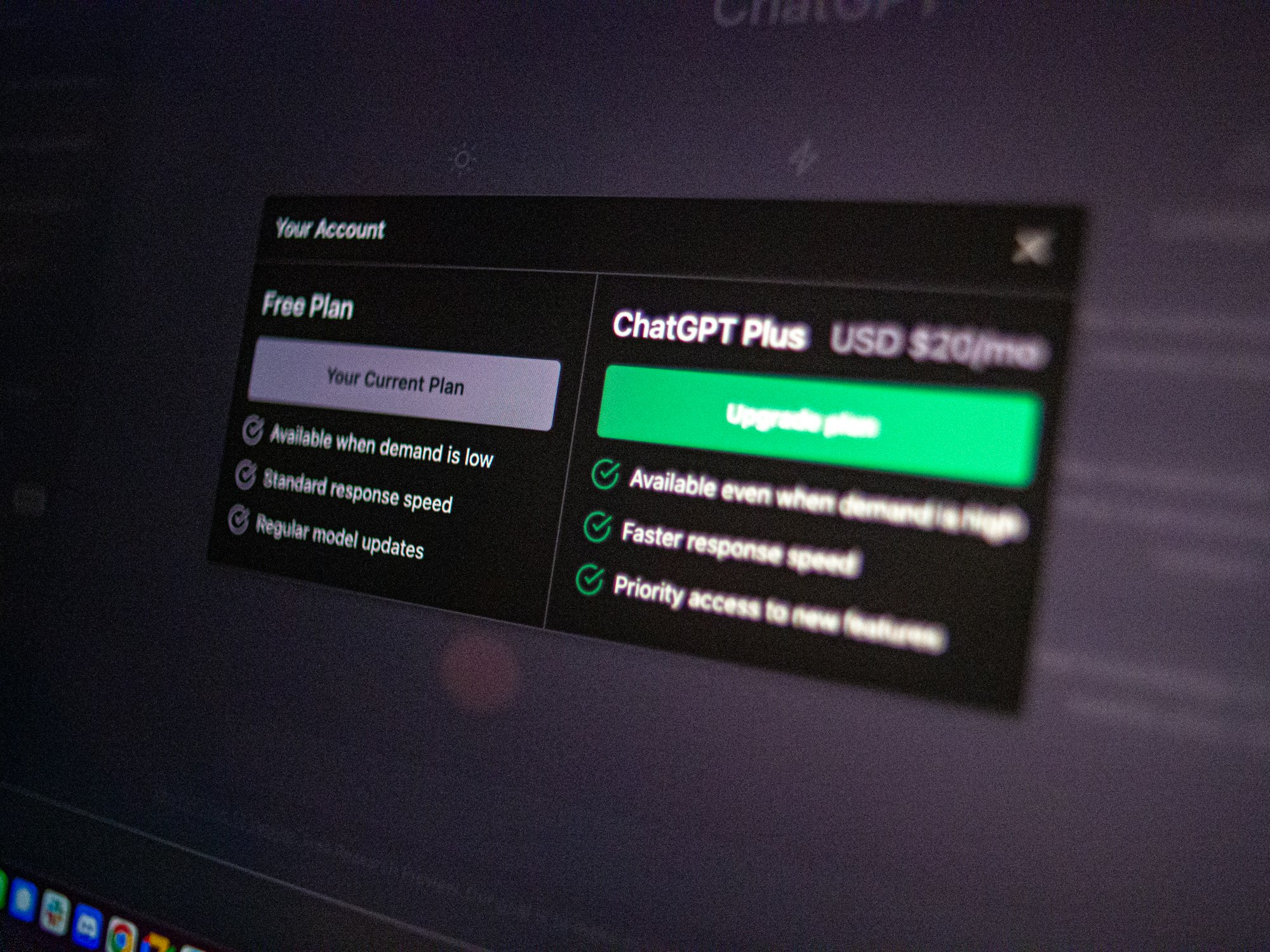The plan emerges from a comprehensive collaboration between:
- Executive order directives
- Input from leading AI companies
- Civil society group consultations
- Direct citizen feedback
At the heart of this initiative lies the Stargate Project, a ambitious venture partnering with tech giants OpenAI and Nvidia to construct robust AI infrastructure across the nation. This partnership signals Trump's commitment to accelerating AI development through private sector expertise.
The plan's significance extends beyond mere technological advancement - it represents a strategic pivot in U.S. policy toward unrestricted AI innovation. By removing regulatory barriers and promoting aggressive development, Trump's approach mirrors Silicon Valley's "move fast" mentality, potentially reshaping America's technological future.
This transformation of AI policy promises to unleash unprecedented growth in artificial intelligence capabilities, marking a decisive shift in how the U.S. approaches technological advancement.
Key Players in Trump's AI Action Plan
The strategic direction of Trump's AI Action Plan rests in the hands of three influential figures who shape its implementation and vision.
Michael Kratsios, the U.S. Chief Technology Officer, leads the charge in developing policies that accelerate AI innovation while maintaining American technological supremacy. His role focuses on reducing regulatory barriers and fostering partnerships between government agencies and private sector AI developers.
David Sacks, a prominent tech investor and Trump advisor, brings Silicon Valley expertise to the plan's execution. His insights help bridge the gap between government initiatives and private sector capabilities, particularly in areas of AI infrastructure development and deployment strategies.
Senator Marco Rubio champions the AI Action Plan in Congress, advocating for increased federal funding and support for AI research. His position on the Senate Intelligence Committee allows him to push for AI advancement while addressing national security considerations. Rubio's efforts have been instrumental in securing bipartisan support for AI development initiatives.
These key players work together to create a framework that prioritizes rapid AI development while maintaining American leadership in the global tech landscape.
Goals of the AI Action Plan
Trump's AI Action Plan sets ambitious targets for establishing American supremacy in artificial intelligence. The plan prioritizes three key objectives:
1. Infrastructure Development
- Building extensive data center networks across the country
- Streamlining energy infrastructure to power AI systems
- Creating robust digital frameworks for AI deployment
2. Innovation Acceleration
- Removing regulatory barriers to AI research and development
- Supporting private sector experimentation with emerging technologies
- Providing resources for breakthrough AI applications
3. American AI Leadership
- Securing U.S. technological advantage in global markets
- Protecting intellectual property rights for AI innovations
- Strengthening domestic AI talent pool through education initiatives
The plan specifically targets areas where American companies can gain competitive advantages. You'll find provisions for expanding AI applications across healthcare, agriculture, and scientific discovery. These strategic investments aim to position U.S. companies at the forefront of AI development while maintaining technological independence from foreign competitors.
Regulatory Changes and Deregulation Measures Proposed in the Plan
Trump's AI Action Plan aims to eliminate regulatory obstacles through specific deregulation measures. The plan suggests a thorough review of current federal and state regulations that could hinder AI development and innovation.
Key deregulation initiatives include:
- Streamlined Approval Process for AI-related patents and intellectual property rights
- Reduced Environmental Impact Studies requirements for data center construction
- Simplified Compliance Framework for AI startups and established tech companies
The plan also calls for a critical examination of Federal Trade Commission (FTC) investigations and orders that might restrict AI advancement. This includes:
- Reevaluation of antitrust policies affecting AI companies
- Modification of data privacy regulations
- Relaxation of cross-border data flow restrictions
Trump's administration supports a "light-touch" regulatory approach, allowing AI companies to innovate without excessive government oversight. The plan emphasizes removing bureaucratic obstacles while still upholding basic safety standards and national security considerations.
These deregulation efforts align with Silicon Valley's requests for greater flexibility in AI development and deployment, potentially speeding up technological progress in the United States.
Public-Private Collaboration Encouraged by the AI Action Plan
Trump's AI Action Plan places significant emphasis on bridging the gap between government initiatives and private sector innovation. The plan outlines specific partnerships between tech giants and federal agencies:
- Scientific Research: OpenAI and federal laboratories collaborate on breakthrough AI applications in quantum computing
- Healthcare Integration: Microsoft's AI tools assist in medical diagnosis and treatment planning across public health systems
- Agricultural Innovation: Google's machine learning algorithms help optimize crop yields in government-supported farming programs
The plan establishes a Public-Private AI Task Force to:
- Streamline data sharing between sectors
- Create standardized AI deployment protocols
- Develop joint funding mechanisms for AI projects
Private sector expertise shapes public policy through direct consultation with industry leaders. Companies like Nvidia provide technical guidance for implementing AI solutions in:
- Government services
- Public transportation
- National security systems
This collaborative approach aims to accelerate AI adoption while maintaining American technological leadership. The partnership model creates opportunities for smaller AI companies to participate in government contracts, fostering innovation across the entire AI ecosystem.

Environmental Concerns Addressed in the Context of Data Centers Powering AI Systems
The rapid expansion of AI infrastructure brings significant environmental challenges. Data centers powering advanced AI models consume massive amounts of electricity - a single large language model training session can use as much energy as 100 U.S. households do in a year.
Trump's AI Action Plan addresses these energy demands through:
- Fast-tracking permits for new power plants
- Streamlining approval processes for data center construction
- Reducing environmental impact assessment requirements
The plan prioritizes rapid infrastructure development over traditional environmental safeguards. Critics argue this approach could lead to:
- Increased carbon emissions from power generation
- Strain on local water resources for cooling systems
- Habitat disruption from facility construction
Silicon Valley companies have responded by announcing green initiatives:
- Microsoft pledges carbon-negative operations by 2030
- Google aims for 24/7 carbon-free energy
- NVIDIA develops energy-efficient AI processors
These environmental trade-offs highlight the complex balance between technological advancement and ecological responsibility in the AI revolution. The true environmental cost of America's AI ambitions remains a critical point of debate among industry experts and environmental advocates.
Military Applications of Artificial Intelligence Highlighted as a Priority Area in Trump's Strategy
Trump's AI Action Plan places significant emphasis on military applications, positioning AI as a critical component of national defense strategy. The Department of Defense receives direct authorization to accelerate the integration of neural networks and machine learning technologies across military operations.
Key military AI initiatives include:
- Autonomous Weapons Systems: Development of AI-powered defense systems with enhanced targeting capabilities
- Battlefield Analysis: Implementation of real-time strategic assessment tools using advanced algorithms
- Cybersecurity Enhancement: Deployment of AI-driven threat detection and response mechanisms
- Intelligence Processing: Utilization of machine learning for rapid analysis of surveillance data
The Pentagon's contracting strategy prioritizes partnerships with American AI companies that demonstrate "unbiased" technological capabilities. These lucrative defense contracts aim to strengthen the U.S. military's technological edge while supporting domestic AI innovation.
The Armed Forces' aggressive adoption of AI technologies reflects Trump's vision of maintaining military superiority through cutting-edge advancements. This strategic focus aligns with broader national security objectives and the administration's commitment to technological dominance in defense capabilities.
Controversies Surrounding Copyright Law and Its Implications For Training Data Used By Machine Learning Algorithms
The intersection of copyright law and AI training data has sparked intense legal debates. Trump's AI Action Plan supports a "fair use" copyright exception for training AI models on copyrighted material - a stance aligned with tech giants like OpenAI, Microsoft, and Google.
Key copyright concerns include:
- Unauthorized Data Usage: AI companies collect vast amounts of copyrighted content without explicit permission
- Creative Rights: Artists and content creators argue their work is being used without compensation
- Legal Gray Areas: Existing copyright laws weren't designed for AI training scenarios
The proposed "fair use" exception would allow AI companies to:
- Train models on copyrighted materials without permission
- Use protected content for machine learning purposes
- Develop AI systems without legal constraints
This controversial position has created a rift between tech companies and content creators. Artists, writers, and musicians argue this approach undermines their intellectual property rights, while AI developers claim restricted access to training data would severely limit technological advancement.
The debate reflects broader questions about balancing innovation with creative rights in the digital age. Tech companies advocate for flexible copyright interpretations, suggesting traditional ownership concepts need updating for the AI era.

Political Influences Shaping The Direction Of U.S. National Strategy On Artificial Intelligence
The AI strategy of the Trump administration reflects the deep ideological divisions in American politics. Trump's executive order specifically targets what he calls "woke, Marxist lunacy" in AI models, highlighting the administration's stance against certain social justice perspectives in technology development.
Key policy directives showcase this ideological approach:
- Selective Framework Focus: The federal AI risk-management framework deliberately excludes references to misinformation, DEI (Diversity, Equity, Inclusion), and climate change
- Contract Preferences: Priority given to AI companies deemed "unbiased" by administration standards
- MAGA-Aligned Priorities: Strategic emphasis on American technological dominance and reduced regulatory oversight
The debate over algorithmic bias has become increasingly politicized. Conservative voices argue for minimal intervention in AI development, while progressive groups push for stronger oversight of potential discriminatory impacts. This political divide shapes how different stakeholders approach:
- AI model training practices
- Data collection methodologies
- Implementation of fairness metrics
- Regulatory compliance standards
These competing ideological perspectives directly influence funding allocations, research priorities, and the broader trajectory of U.S. AI development.
US-China Competition In The Realm Of Generative Models And Strategies To Maintain Technological Superiority Over Chinese Firms
The race for AI supremacy between the U.S. and China intensifies as both nations pour resources into generative model development. China's rapid advancement in AI capabilities poses significant challenges to U.S. technological leadership.
Key risk factors for U.S. competitiveness include:
- Limited Access to Computing Power: Chinese firms secure substantial GPU resources while U.S. companies face hardware constraints
- Data Availability: China's vast population provides extensive training data advantages
- Government Support: Beijing's direct funding and regulatory flexibility accelerate Chinese AI development
Trump's AI Action Plan addresses these challenges through:
- Fast-tracking data center approvals
- Removing regulatory barriers for AI companies
- Strengthening public-private partnerships
- Protecting intellectual property rights
The plan specifically targets Chinese firms by:
- Restricting access to U.S. technology exports
- Implementing stricter screening of Chinese investments
- Supporting domestic chip manufacturing
- Building robust AI infrastructure through the Stargate Project
These measures aim to prevent China from achieving economic, military, and diplomatic dominance through AI technology advancement.

Industry Reactions To The Trump Administration's Vision For An A.I.-Driven Future
Major tech companies have expressed mixed reactions to Trump's AI Action Plan. Microsoft CEO Satya Nadella praised the plan's emphasis on reducing regulatory barriers, highlighting how streamlined processes could accelerate AI development across their Azure platform.
Anthropic's leadership has raised concerns about the plan's limited focus on AI safety measures. The company's stance reflects a broader industry debate about balancing rapid innovation with responsible development practices.
Key industry responses include:
- Support for Infrastructure Development: Tech giants welcome the push for expanded data center construction and energy infrastructure
- Copyright Reform Advocacy: OpenAI and Google back Trump's position on fair use exceptions for AI training
- Safety Framework Concerns: Leading AI researchers question the absence of robust safety guidelines
- Military AI Integration: Defense contractors express enthusiasm for increased Pentagon AI contracts
Silicon Valley investors see the plan as a catalyst for market growth, with venture capital firms increasing their AI portfolio investments. The removal of regulatory barriers has sparked new startup formations in the AI sector, particularly in areas aligned with national security interests.
Potential Economic Impacts of Unchecked AI Growth
The rapid commercialization of generative AI technologies brings significant economic risks that demand immediate attention. Market analysts predict potential disruptions across multiple sectors:
1. Job Market Volatility
- AI automation could displace 300 million full-time jobs by 2030
- Creation of new roles might not match the pace of job displacement
2. Economic Inequality
- Concentration of wealth in tech companies controlling AI infrastructure
- Widening gap between AI-ready and traditional businesses
3. Market Instability
- Overvaluation of AI startups without proven business models
- Risk of an "AI bubble" similar to the dot-com crash
The absence of robust safeguards raises concerns about:
- Monopolistic practices in data center operations
- Energy cost spikes in regions hosting AI infrastructure
- Small business competitiveness against AI-powered corporations
Trump's AI Action Plan prioritizes rapid development over regulatory frameworks, potentially accelerating these economic challenges. The plan's emphasis on deregulation might amplify market vulnerabilities, particularly affecting middle-class workers and traditional industries adapting to AI transformation.
FAQs (Frequently Asked Questions)
What is Donald Trump's AI Action Plan and why is it significant in the field of Artificial Intelligence ?
Donald Trump's AI Action Plan is a strategic framework aimed at accelerating the development and deployment of Artificial Intelligence technologies in the United States. It emphasizes innovation, infrastructure development, and promoting American leadership in AI, involving major companies like OpenAI and Nvidia to foster advancements in this critical sector.
Who are the key players involved in promoting AI development under Trump's administration ?
Key figures include White House officials such as Michael Kratsios, David Sacks, and Marco Rubio. These individuals play pivotal roles in advocating for rapid AI technology growth and shaping policies that support fast-paced innovation within the US AI landscape.
What are the main goals outlined in Trump's AI Action Plan ?
The plan focuses on three primary objectives: driving innovation in AI technologies, developing robust infrastructure to support AI systems, and promoting American dominance in the global AI arena to ensure competitive advantage and technological leadership.
How does Trump's AI Action Plan address regulatory changes related to Artificial Intelligence ?
The plan proposes removing federal and state regulations that create bureaucratic hurdles, aiming to deregulate aspects of AI development. This approach seeks to eliminate red tape that could slow down innovation, thereby fostering a more conducive environment for AI research and commercialization.
What role does public-private collaboration play in Trump's strategy for advancing AI ?
The strategy emphasizes fostering strong partnerships between government entities and private sector companies. This collaboration is intended to accelerate policy development, encourage widespread adoption of AI technologies across various industries, and leverage private sector expertise to maximize national benefits from AI advancements.
How does the plan address environmental concerns related to data centers powering AI systems ?
Recognizing the substantial energy demands of large-scale AI deployments, the plan discusses the need for enhanced energy infrastructure to support data centers while considering potential environmental impacts. It aims to balance technological growth with sustainable practices to mitigate ecological footprints associated with powering advanced AI models.





